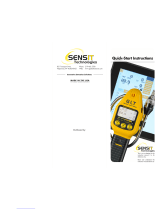
Panel Descriptions
3
3
OUTPUT-A (MONO) jack,
OUTPUT-B jack
The output jacks are used to connect the unit to an amplier
or another eects unit.
* The unit’s functions dier according to how it is connected.
Refer to “Setting the Output Method” (p. 15).
4
INPUT-A (MONO) jack,
INPUT-B jack
These jacks accept input signals (coming from a guitar, some
other musical instrument, or another eects unit).
* The unit’s functions dier according to how it is connected.
Refer to “Setting the Output Method” (p. 15).
* The INPUT-A (MONO) and INPUT-B jacks double as power
switches. Power to the unit is turned on when you plug into
the INPUT-A (MONO) or INPUT-B jack; the power is turned
o when the cable is unplugged. Be sure to disconnect any
cord plugged into the INPUT-A (MONO) or INPUT-B jack
when not using this eects device.
5
TEMPO/EXP jack
This jack is for connecting a footswitch (FS-5U, FS-6, FS-7; sold
separately) or an expression pedal (Roland EV-5, FV-500H,
FV-500L, EV-30; sold separately).
This jack lets you use a footswitch to set the tempo, control
the loop, or turn TWIST on/o, or use an expression pedal to
control various parameters.
* For details, refer to “Setting the Tempo Using a Footswitch”
(p. 12),
“Using a footswitch to control the loop function” (p. 14),
“Using the TWIST Function” (p. 14), or
“Control Using an Expression Pedal” (p. 19).
6
Pedal switch
This is used for switching the eect on and o, and for
switching between the dierent functions.
7
Thumbscrew
When this screw is loosened, the pedal will open, allowing you
to change the battery.
* For instructions on changing the battery, refer to “Changing
the Battery” (p. 21).





















